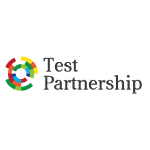Perhaps their most common use however, is in high volume recruitment, as large employers typically struggle to make effective short-lists. Psychometrics allow these companies to automate the short-listing process, rapidly identifying the highest potential candidates from their applicant pool, progressing them to more high-touch assessments such as in-person interviews, video interviews, or assessment centres.
However, guidance for using psychometric testing in volume recruitment is still lacking, and many organisations feel unsure about automated short-listing. In this article, I will outline how best to use psychometric assessments specifically for volume recruitment, along with practical considerations which must be made along the way.
Ability Tests
Ability tests, also known as aptitude tests or cognitive ability tests, are perhaps the most commonly used early stage selection tools. Graduate, apprentice, and internship schemes in particular, make extensive use of ability tests, allowing organisations to rapidly identify the brightest candidates. Research shows that ability tests rank among the most powerful predictors of real-world job performance known (Schmidt & Hunter, 1998). Generally speaking, applicants are given a combination of ability tests, usually comprising numerical, verbal, and inductive / abstract reasoning tests, allowing organisations to measure a range of specific aptitudes.
When using ability tests, it is always recommended to simply rely on overall scores across the battery of tests to make selection decisions. Some organisations get bogged down on specific scores, requiring candidates to achieve a minimum score on individual assessments. This is inherently redundant, as the overall score across multiple ability tests will show greater predictive validity than any specific ability test, as general cognitive ability is the primary characteristic of interest. Additionally, we advise against using fixed cut-scores or pass marks with ability tests. Instead, you should determine how many candidates you can accommodate at the next recruitment stage, and simply select that specific number of applicants, guaranteeing a smooth transition to the next phase of the recruitment process.
Personality Questionnaires
Although personality questionnaires are commonly used in later stage, high-stakes recruitment, they have significant applicability in volume recruitment also. Personality questionnaires are designed to either measure certain personality traits (i.e. extraversion, conscientiousness, resilience etc), or personality types (MBTI, Enneagram, SLOAN etc), depending on the model of personality applied. Research shows that certain personality traits are useful predictors of performance, engagement, and satisfaction in the workplace (Schmidt & Hunter, 1998; Ahmed et al, 2020), so when used correctly should increase quality of hire and employee retention.
When using personality questionnaires in volume recruitment, we recommend adopting an actuarial approach to candidate selection. Rather than trawling through individual profiles, simply identify the specific traits that you deem relevant to the role, and average those scores en masse. This average score should then form the basis of the selection decision, rank ordering the candidates by their overall level of fit. Not only does this save significant time and effort compared to looking at individual profiles, it’s also considerably fairer. By outlining your specific requirements, you avoid applying subjective criteria to different candidates, keeping the process objective and fair.
Situational Judgement Tests
Situational judgement tests (SJTs) measure a candidate’s propensity to make effective judgements and sensible decisions in a workplace relevant context. Although ability tests and personality questionnaires are more commonly used assessments, SJTs are increasingly popular assessment tools, particularly within the graduate recruitment space. Candidates are presented with workplace relevant scenarios, and asked to rate or rank the effectiveness of particular courses of action. Research shows SJTs to be useful predictors of performance (Corstjens, Lievens, & Krumm, 2017), making them valuable additions to the selection process. Moreover, they tend to offer a uniquely positive candidate experience, as the situations presented in an SJT can very closely match the role itself, providing what psychologists call “Face Validity”.
When using SJTs, we strongly recommend against using SJTs which claim to measure specific sub-scales. For example, some SJTs will provide scores on “Organisational Skills”, “Interpersonal Skills”, or “Resillience” alongside the overall score. Not only are these sub-scores rarely reliable psychometrically speaking, but research shows that SJTs do not measure specific sub-traits, and instead only measure a single, overall judgement and decision making factor (Jackson, LoPilato, Hughes, Guenole, & Shalfrooshan, 2017). Therefore, to simplify the process we recommend rank-ordering candidates by their overall score, and making selection decisions based on their overall performance, not on any sub-scores.
Conclusion
Ability tests, personality questionnaires, and SJTs rank among the most effective, scalable, and readily accessible psychometric assessments on the market, making them ideal volume recruitment tools. When choosing a provider, we strongly recommend seeking one that offers all three assessment modalities, allowing you to combine them into a single stage. Although using all three assessment modalities may seem like overkill, modern advances in psychometric testing have greatly shortened assessment times, allowing you to test candidates extremely thoroughly in under an hour. This makes all three assessment modalities viable volume selection tools, and ensures that they can be combined to maximise the probability of identifying the highest potential applicants.







